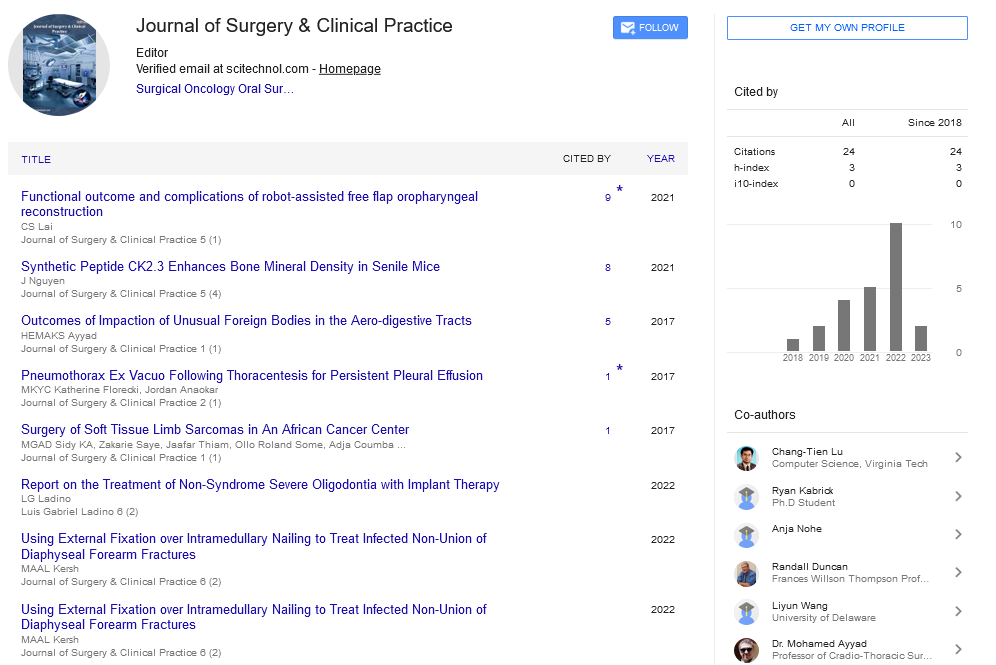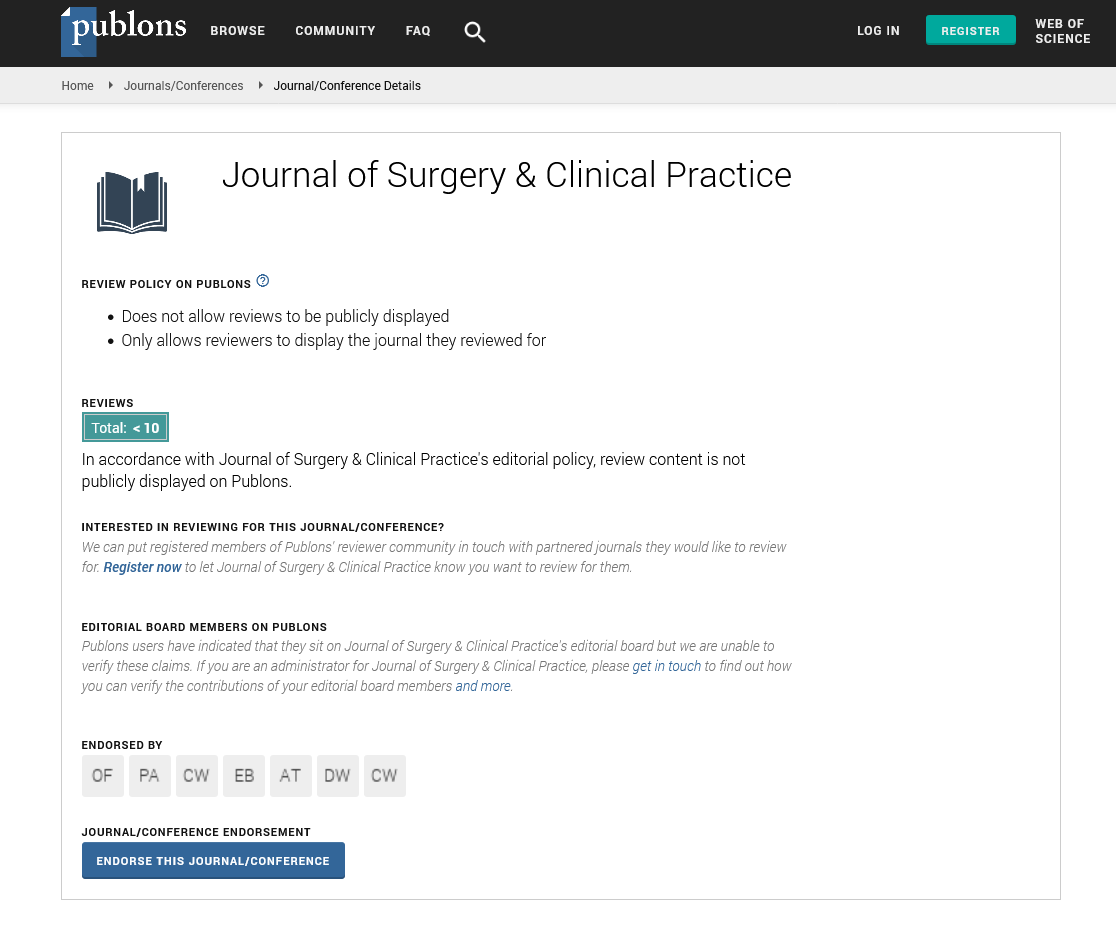Perspective, J Surg Clin Prac Vol: 7 Issue: 2
Role of Coronary Artery Bypass Grafting in Restoring Blood flow to Heart
Laura Cristina*
Department of Intensive Care and Resuscitation, Cleveland Clinic, Ohio, USA
*Corresponding Author: Andrew Shaw
Department of Intensive Care
and Resuscitation, Cleveland Clinic, Ohio, USA
E-mail: laura.bio@crist.edu
Received date: 23 May, 2023, Manuscript No. JSCP-23-107201;
Editor assigned date: 26 May, 2023, PreQC No. JSCP-23-107201 (PQ);
Reviewed date: 12 June, 2023, QC No. JSCP-23-107201;
Revised date: 19 June, 2023, Manuscript No. JSCP-23-107201 (R);
Published date: 26 June, 2023 DOI: 10.35248/JSCP.23.7.100381
Citation: Cristina L (2023) Role of Coronary Artery Bypass Grafting in Restoring Blood flow to Heart. J Surg Clin Prac 7:2.
Description
Coronary Artery Bypass Grafting (CABG) is a surgical procedure used to treat severe coronary artery disease. It involves creating bypasses around blocked or narrowed coronary arteries, restoring blood flow to the heart muscle. CABG has been a cornerstone in the management of advanced coronary artery disease for several decades. CABG is indicated for patients with severe coronary artery disease who have not responded well to medication or less invasive interventions, such as angioplasty or stenting. It is commonly performed in individuals with multiple blockages, significant narrowing of the left main coronary artery, or poor response to medical therapy. Patients experiencing angina (chest pain), shortness of breath, or those at risk of a heart attack may benefit from CABG. The decision to undergo CABG is based on careful evaluation of the patient's condition, taking into account factors such as the extent and severity of the disease, overall health, and individual risk factors. The CABG procedure typically begins with the patient under general anesthesia. A surgeon makes an incision in the chest to access the heart. To ensure the heart's blood circulation and oxygenation during the surgery, a heart-lung machine is utilized while temporarily stopping the heart. The surgeon then harvests a healthy blood vessel, often taken from the leg or chest wall, to create a bypass graft. This graft is carefully attached to the blocked coronary artery, bypassing the narrowed or blocked segment. In cases where there are multiple blockages, multiple bypass grafts may be created. The surgeon ensures that the grafts are securely attached and that blood flow is restored to the heart muscle. Once the grafts are in place, the heart is restarted, and the chest incision is closed.
Following CABG, patients are closely monitored in the intensive care unit or a specialized cardiac care unit. They receive appropriate pain management and are gradually weaned off in the ventilator. Monitoring of vital signs, heart rhythm, and oxygen saturation is carried out regularly. The healthcare team closely observes the incision site for signs of infection and ensures proper wound care. Physical therapy is initiated early to promote mobility and prevent complications such as blood clots. Patients are educated on medications, lifestyle modifications, and the importance of adhering to a cardiac rehabilitation program.
CABG provides significant benefits for patients with severe coronary artery disease. It relieves symptoms such as chest pain, improves exercise tolerance, and reduces the risk of heart attack or premature death. The bypass grafts create alternative routes for blood flow, bypassing the narrowed or blocked arteries and restoring adequate blood supply to the heart muscle. This improves the heart's ability to pump blood effectively and reduces the strain on the heart. CABG also offers advantages over other treatment options. It has proven to be more effective than medical therapy alone in improving symptoms and reducing the risk of adverse cardiovascular events. Moreover, CABG can be an alternative to Percutaneous Coronary Intervention (PCI), such as angioplasty and stenting, in cases where PCI is not feasible or has not achieved satisfactory results. CABG provides more complete revascularization, allowing for the treatment of multiple blockages simultaneously.
Long-term outcomes following CABG are generally favorable. Patients experience improved quality of life and a reduced need for angina medication. The procedure has been shown to provide longlasting benefits, with many patients enjoying a significant improvement in symptoms for years after surgery. However, ongoing medical management, lifestyle modifications, and regular follow-up are essential to maintaining the long-term success of CABG.
 Spanish
Spanish  Chinese
Chinese  Russian
Russian  German
German  French
French  Japanese
Japanese  Portuguese
Portuguese  Hindi
Hindi 
